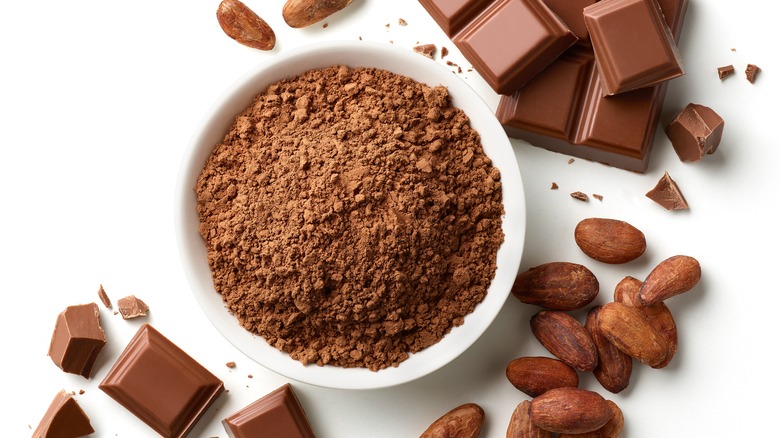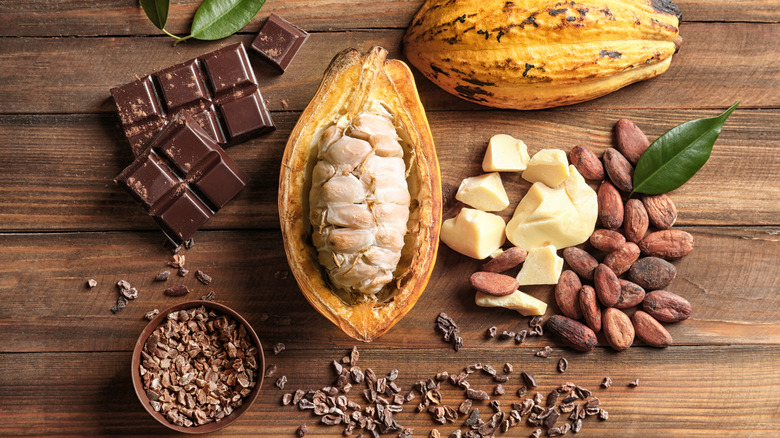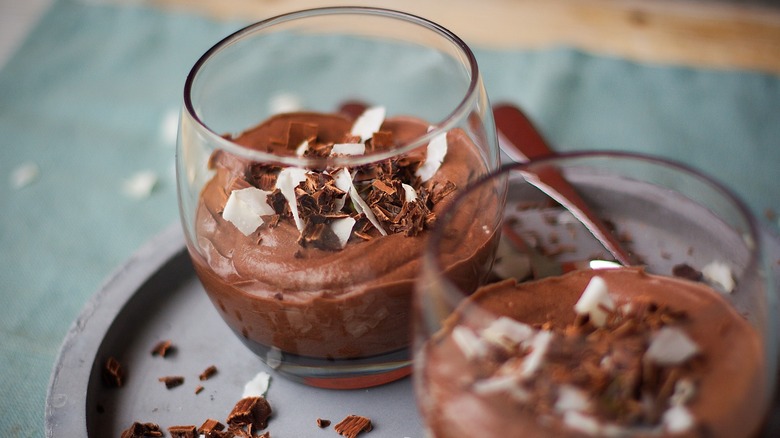What's The Difference Between Cacao And Cocoa?
The world is full of chocolate enthusiasts. Lovers exchange chocolates on Valentine's Day, restaurant menus have decadent desserts like Death By Chocolate, and who can forget poor Augustus Gloop, who ended up being washed away in Willy Wonka's chocolate river because of his obsession with the confection?
This attraction to chocolate is nothing new. Chocolate has been adored since as early as 1500 BC (per Smithsonian) — and the world's fascination with the tropical fruit continues today. According to Fortune Business Insights, in 2021, the worldwide market was worth almost 47 billion dollars.
Despite the popularity of chocolate, many people don't appreciate the process that takes the yellow, oblong cacao pods from the tree to the store shelves in the form of cacao or cocoa powder; even fewer understand the difference between the two products. Let's look at what makes cacao and cocoa different and how to best use each as an ingredient in our favorite recipes.
What's the difference?
The most significant difference between cacao and cocoa powder is in how each are processed. Both start the same; the cacao pods are harvested, and the beans are removed. They are then fermented, dried, and roasted, but the roasting temperature used to make cacao is so low the cacao is still considered raw at the end while the beans used for cocoa are roasted at a higher temperature. After the low-temperature roasting, the beans used for cacao are pressed and made into nibs or powdered cacao (per Bon Appétit). Because of this minimal processing, cacao powder is considered purer than cocoa.
There are myriad health benefits to consuming cacao in this raw form. WebMD says cacao, including cacao nibs, is full of magnesium, iron, zinc, and other essential nutrients because of its high chocolate liquor content. But, if you're looking for a boozy beverage, you won't find it in chocolate liquor — it contains no alcohol (via Guittard).
Are cocoa and cacao interchangable?
Often home cooks' big question about cocoa and cacao is: are they interchangeable? Can you use cacao as a substitute for cocoa powder?
According to MasterClass, the answer is: sometimes. If you have a dish where the bitter taste of cacao will not interfere with its flavor, go ahead and use it. MasterClass recommends using cacao powder in raw desserts as the flavor can change during cooking. A dessert like chocolate avocado mousse may be a delicious way to incorporate some healthy cacao into your diet. Or, think about adding healthy cacao nibs to your favorite banana bread recipe to change things up a little.
Dusting sweet confections with cacao is not recommended, as the bitterness could ruin the dessert. Cocoa powder, which is less bitter, is a better choice for that tiramisu. Adding cacao to the end of cooking time in savory dishes like chili or mole sauce can bring a new exciting flavor profile to those recipes. Don't forget, when buying cocoa, cacao, or your favorite chocolate bar, look for the fair-trade logo. This logo ensures that your chocolate was produced ethically with consideration for the farmers and workers.


